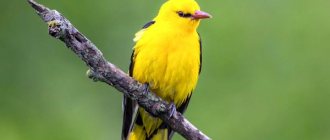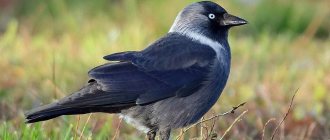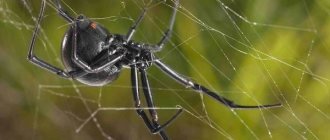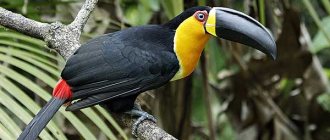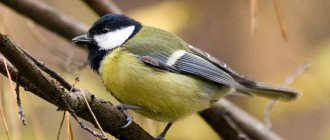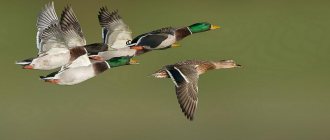Origin of the species and description
Photo: Jay
The Latin name - Garrulus glandarius - was assigned to it in 1758 by Carl Linnaeus. If the first word in the name suggests that the bird is characterized by noisy cries, then the second comes from the Latin glandis, which means acorn and emphasizes its food preferences.
Linnaeus found the similarity of this bird with representatives of the corvid family, which includes rooks, jackdaws, cuckoos, magpies, crows themselves, about 120 species in total. The ancestors of these birds were found in Europe; their remains date back to the Middle Miocene, where they lived about 17 million years ago.
Fun Fact: Blue jay feathers are not as deep in color as they appear. This illusion is created by the refraction of light within the structure. It creates a multi-layered application that gives such a vibrant shade. If you pull out the pen and look at it from a different angle, the bright color is lost.
The birds' weight does not exceed 200 g, but they look more impressive due to their long tail and large head. The length of the bird, including the tail, can reach 400 mm, but on average it is 330 mm, with a height of about 150 mm. A strong beak, which is capable of splitting oak acorns, nuts and other dense seeds, is black in color. It is relatively small but strong, measuring on average 33 mm from the nostrils.
Appearance and features
Photo: Jay bird
The most common is the European nominate species with nine subspecies. A bird with fluffy plumage, on the head it is light and slightly ruffled. When frightened, the feathers on the back of the head rise. A black stripe resembling a mustache extends from the beak. The color of the body is gray-red; Siberian jays have a reddish head, while European jays have a lighter head; there are dark feathers on the head that create stripes. Those found in the Caucasus and Crimea have a black “cap”.
The neck is lighter than the neck. The front flight coverts are blue with black stripes, the flight feathers are black with white markings at the tip. The tail feathers are black, the rump and undertail are painted white. The paws are brown.
Video: Jay
A group with three subspecies from North Africa: with a rufous nape, gray plumage, a light head and a dark “cap”. Four subspecies from the Middle East, Crimea, Turkey: with uniformly colored plumage, black crown and light mask.
In Mongolia and Central Asia there is a saxaul jay; it lives in these bushes and does not really like to fly. It is smaller in size than a jackdaw, gray in color with a black tail, a black round spot on the throat and a spot running from the eye to the beak.
In the Caspian forests of Iran, a smaller subspecies of saxaul bird with gray plumage and a dark crown is seen. In the Himalayas - the Himalayan, which is also found in Afghanistan and India: gray back, gray with a reddish tint on the belly. The neck is pockmarked with white feathers, the head is black.
The Ornate Jay lives on the Japanese Islands and is sharply different from its relatives in color: the neck and head are blue, the wings and tail are black and blue with a purple tint, and there are white feathers on the neck. The body has brownish-red plumage.
The crested jay is found in Malaysia and Thailand. Her chicks are striped and gradually darken to black, only the collar remains snow-white. A completely original plumage, unusually bright, blue, of a bird from the North American continent. The chest, belly and under the beak are gray-white, the head around the neck is framed by a black rim. The ends of the feathers on the wings and tail are snow-white.
Florida is home to the blue bush. The throat and belly are gray, the top of the back is dark gray, the rest of the color is dark blue. In America there is another species that is found in Mexican lands, it bears the name of the black-headed magpie jay for its long tail and crest, like a parrot. The color of such individuals is bright blue, the belly is white, the cheeks and neck are black, and the “cap” and crest are the same color.
There is also a rare Yucatan species. The bird's outline is similar to a magpie, but with a shorter tail. The whole bird is black, the wings and tail are bright blue, and the beak is yellow. And another species is similar to a magpie, but in color: its entire belly is white, the rest of the feathers are black, there is a blue eyebrow above the eye, and a small blue stripe on the cheek. Such individuals are called white-bellied.
Where does the jay live?
Photo: Jay bird in winter
These passerines are widespread throughout Europe, as well as in Morocco and Algeria, with a range extending east beyond the Urals and northern Middle East, through Azerbaijan and Mongolia into China, Korea and Japan. In Russia, they are found throughout the territory where there are forests, from the European part to the Far Eastern shores, in the Kuril Islands and Sakhalin, except for the zone of humid subtropics.
In addition to Eurasia, birds are found in North America. They live in forests of all types, especially beech and hornbeam, but oak ones are preferred; they are also found in parks and large orchards. In the northern regions and Siberia, they settle in birch groves and coniferous forests. In more southern areas, they inhabit places where there are bushes. In the mountains they rise up to the pre-alpine zone.
The endemic saxaul jay lives in the Central Asian region and Mongolia. It lives where the shrub that gives it its name grows, since in winter this species feeds mainly on saxaul seeds. These birds can be found near housing in rural areas and at summer cottages, the main thing is that there is a forest nearby. They can migrate during cold periods of the year, appearing in more sparse forests and isolated groups of trees.
What character does the jay bird have?
First of all, it should be noted that this is a forest dweller. The favorite habitat of these birds is oak groves. The bird itself has a restless and very cautious disposition, which is why it has become a kind of danger signaler.
The bird has good and sensitive hearing, so it is the first to warn forest dwellers about the appearance of a person or predator. She can rightfully be called the guardian of the forest.
It should be noted that unpleasant and sharp sounds give the bird away. She is very shy, and her flight is very maneuverable . Therefore, if you scared her away, then all you can do is admire her fast flight between the trees. This bird does not fly very fast.
The bird practically does not descend to the ground, and if it does, it moves along the ground in small but frequent jumps. Often it is located in the middle or upper tiers of the forest.
It should be noted that the closest relatives of jays are birds such as the nutcracker and the nutcracker.
Jay: migratory bird or not
Answering this question, it should be noted that the bird most of the time leads a nomadic way of life. However, it can also fly.
If we talk about southern birds, they lead a sedentary lifestyle.
They can fly only in case of a bad harvest or due to weather disasters.
What does a jay eat?
Photo: Bird of the jay family
These are omnivorous birds and their diet depends on the time of year. Among living organisms, it hunts various insects, can catch a frog or a lizard, and eat snails and mollusks. Birds attack small rodents and birds, destroy nests, eating eggs and chicks. If in warmer times of the year there is more animal food in their stomachs, then in cold times it is plant food.
The main food of this representative of corvids in the broad-leaved and mixed forests of the Eurasian and North American regions are oak acorns. A correlation has long been noted between the numbers of these birds and acorn harvests, the residence of these birds in the region and the presence of oak trees.
Interesting fact: Jays, which store up to five thousand acorns for the winter, hide them in secluded places, spreading them around. This helps the plant spread. Many acorns buried in moss or soil sprout in the spring far from the place where they were collected.
These birds are adapted to eating acorns. Their straight beak has very sharp edges, and their short but flexible legs are equipped with sharp and tenacious claws. During the period from autumn to spring, when there is little other food, their stomachs are 70-100% filled with acorns. Their diet contains seeds of various plants, including spruce, pine, and beech.
Interesting fact: This bird can carry five acorns at once, with one in its beak, another in its mouth, and three more in its crop.
Birds, in small quantities, without causing any particular harm to the crop, feed on:
- oats;
- sunflower;
- wheat;
- corn;
- legumes
They sometimes feast on:
- raspberries;
- lingonberries;
- strawberries;
- bird cherry;
- rowan.
Interesting fact: Of the insects that jays eat in the summer, 61% are pests, only 1.5% are beneficial, and the rest are indifferent to agricultural crops.
Insect pests on its menu include:
- golden bronzes;
- chafers;
- weevils;
- longhorned beetles;
- gypsy and pine silkworms;
- sawfly larvae;
- leaf-eaters.
Birds, in search of food, visit vineyards and gardens. In the fall, after harvesting, they can be seen in the fields and beds, where they pick up the remaining small vegetables: potatoes, beets, carrots, and grain in the harvested fields.
Features of character and lifestyle
Photo: Jay forest bird
These birds are very smart, this can be seen in their behavior when they live close to housing. If you feed them, they fly in regularly, announcing their arrival with sharp, loud cries. Waiting on the side until pieces of bread or other food are placed in their usual place.
Interesting fact: A jay in a mirror perceives itself as a reflection, for example, a parrot sees its brother there.
Some individuals in the population live sedentary, others migrate to warmer climatic zones, and some move within the territory where they live. They travel in groups of varying numbers from five to fifty; there are cases when such flocks numbered up to 3 thousand individuals. Birds nest in different places, both in thickets and closer to clearings; they can also nest on a tall hawthorn bush.
Interesting fact: These noisy creatures are easily tamed, and their sound repertoire is very diverse, they can imitate different birds and noises. At home, they can be taught to talk.
They can form a flock to fight off birds of prey. Birds go through a molting period in the second half, and chicks at the end of summer. These corvids live for about 7 years.
Interesting fact: Birds can often be seen on anthills, where they not only can feed on insects, their acid repels parasites. It is possible that the bites of these insects soothe itching during feather growth during the molting period.
Interesting facts about birds of this species
- This bird has an interesting way of fighting parasites. She sits on an anthill and the goosebumps kill the pests on her with the help of their acid.
- Birds help plant oak trees. They often bury acorns in the ground.
- Birds live a maximum of 7 years, but there have been such long-livers who lived 16-20 years.
- In winter, birds can gather in flocks. One flock can include about 30 individuals. Only after the jay chicks grow up can the bird join the flock.
Social structure and reproduction
Photo: Jay bird Author: Svetlana Medvedeva (@msvetlana012018)
Birds create pairs and can gather in close groups and flocks. The language of communication through vocalization is a variety of sounds and screams. Danger signals given by jays are also perceived by other species of birds and animals.
Visually, they can read the reaction from the position of the feathers on the head. When alarmed, the bird's entire head ruffles up. In crested jays, aggression is characterized by a vertical crest; when agitated, the feathers on the crest take the direction from the back of the head to the beak.
The mating period in the northern regions of the range is once a year, starting in May, in southern latitudes - twice. Pairs form from the beginning of spring. The male takes care of the female, flies low over the ground, makes various sounds, and she takes a position asking for food, a chick, and her partner feeds her. At this time, the couple begins to build a nest. It is usually located four to six meters above the ground, at the junction of a significant branch and the main trunk. Its diameter is approximately 19 cm, height – 9 cm.
Interesting fact: As a courtship ritual, birds build several nests at once, but only finish one.
For the external base, flexible twigs are broken off from living trees, everything inside is covered with small twigs, roots, held together with clay, and on top of this a soft, dry bedding is made of moss, lichen, dry grass and leaves. The whole process takes a week. If someone discovers the nest, the owners leave it. If a clutch is lost, the pair makes a second one.
Jays begin laying eggs in Europe and the southern regions of the Russian Federation in April. There are 2-10 eggs in a nest, but on average there are 5 speckled bluish or greenish eggs. At this time, the birds are not heard at all; they avoid attracting attention. The female sits on the eggs, after 17 days the chicks are blind and leave the shell without feathers. After five days their eyes open, feathers begin to grow after a week.
For the first ten days, the female remains on the nest, then the parents take turns feeding, warming and protecting them. During the feeding period, parents fly for food 20 hours a day, during which time they feed the chicks about 40 times. After three weeks, the babies are ready to fly out of the nest. A couple of days before, they crawl out of it and move along the branches, but do not travel far.
Once they begin to fly on their own, they stay within 10-20 meters of the nest. Until winter, the juveniles do not move far from their parents and fly in a small flock. With the onset of winter they become independent. Sexual maturity occurs the following year.
Male and female
Courtship season falls in the spring months. Depending on the species, jays can mate for life, or they can mate only to create offspring. Sexual dimorphism is weakly expressed and is noticeable only when the male is larger. Spouses can also be distinguished by their lifestyle - females hatch eggs, and males, at this time, look for food.
Natural enemies of jays
Photo: Jay
These birds are hunted by larger predators. At night, owls and eagle owls pose a threat. During the day, jays are attacked by large falcons, peregrine falcons, goshawks, and crows. Among mammals, they are hunted by representatives of the mustelid family: martens, ferrets, sables, and stoats. They eat chicks and eggs, but can also attack an adult sitting on the nest.
Food competitors for jays are woodpeckers, starlings, hazel grouse, thrushes, and crossbills. But noisy birds are quite aggressive towards strangers. They can attack them and scare away competitors, like a hawk.
Interesting fact: In the area where blackbirds were constantly feeding, a jay periodically flew in and noisily drove away its black competitors. This continued until the blackbirds finally left the area.
Among the mammals, the competitors of these representatives of passerines are rodents; they also feed on acorns and plant seeds, and destroy bird pantries. Birds can die from chemicals used on farmland against insect pests. They are purposefully destroyed in orchards and vineyards. Blue-winged creatures do not greatly harm fruit plantings, but they get caught in snares along with starlings and thrushes.
They are distinguished by their intelligence and intelligence
Either jays intuitively sense the onset of cold weather, or they are always ready for the worst, but, nevertheless, even a person could envy some of their economic skills. The jay's intelligence allows it to accumulate large reserves of food - for example, up to 3 kg of nuts - in case of famine. Birds build their storage facilities in hollow stumps and hollows of trees. Jays living in cities are not seen collecting supplies - as a rule, they feed on what people leave in birdhouses or even trash cans. Some jays are bold enough to fly onto people's balconies and look for food there.
Population and species status
Photo: Russian bird jay
In Europe, the jay population ranges from 7.5 to 14.6 million pairs, which equates to 15 to 29.3 million adults. 45% of the total is found in this part of the world, so a rough estimate of their global population is 33-65.1 million mature individuals. In Europe, trends between 1980 and 2013 show moderate population growth, with demographic increases expected unless there are significant threats. The situation is assessed as stable.
These passerines have a large geographic range and do not approach the vulnerable threshold. The blue jay population in North America is also stable.
One of the subspecies of the saxaul jay, the Ili jay, is causing concern. She is an endemic species. Lives in Kazakhstan, in the southern Balkhash region. It is listed in the Red Book of Kazakhstan as an isolated subspecies with a narrow range and unstable numbers. It is found in the Karakum, Kyzylkum, and deserts of the Balkhash region. Habitats between the Ili and Karatal rivers, occasionally occupying the opposite banks of these rivers. Over the past half century, the area has not changed. Birds live sedentary lives, without migration.
